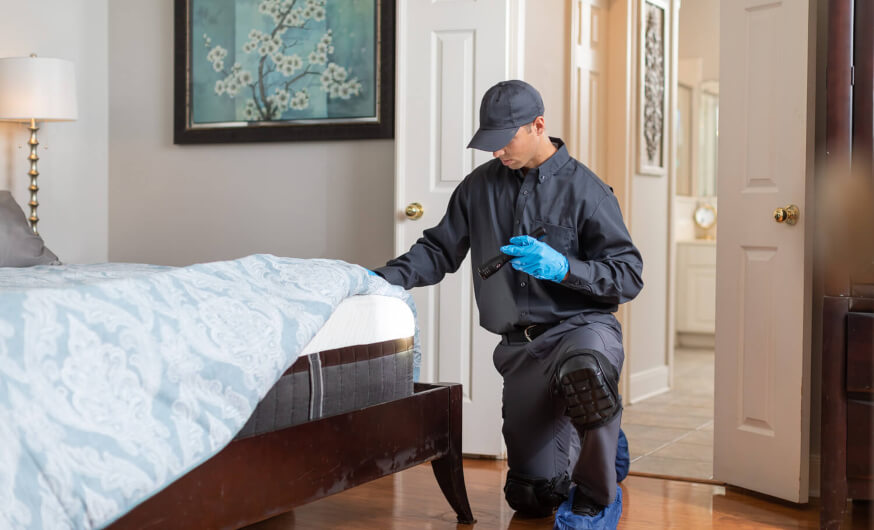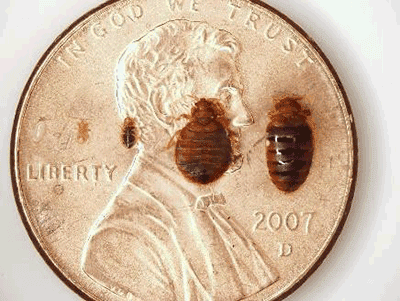A1 Bed Bug Extermination Services Charlotte NC: Effective Bed Bug Control
A1 Bed Bug Extermination Services Charlotte NC: Effective Bed Bug Control
Blog Article
Comprehensive Bug Control Techniques: Discover How to Eliminate Bed Bugs Safely and Efficiently
In the world of bug control, the presence of bed insects can posture a tough and relentless problem for businesses and homeowners alike. By comprehending the nuances of secure handling techniques, checking out non-chemical therapy alternatives, and examining the efficacy of chemical interventions, one can navigate the intricacies of bed bug removal with precision and care. Join us as we browse through the landscape of extensive bug control techniques to uncover the most efficient methods for combating bed pests securely and properly.
Identifying Bed Insect Infestations
When evaluating for bed bug problems, it is necessary to meticulously take a look at usual hiding places such as bed mattress seams, furniture holes, and electric outlets. Mattress joints supply a comfortable setting for bed insects to stay, as they are close to their food resource-- human blood.
To successfully determine bed insect infestations, individuals need to search for indications such as bloodstains on sheets, dark areas of excrement on mattresses, and discarded exoskeletons. Additionally, a pleasant stuffy smell might exist in spaces with severe problems. Trigger recognition of bed insects is important for carrying out suitable insect control steps to eradicate these undesirable intruders efficiently.
Safe Handling of Infested Items

To safely deal with ravaged products, begin by very carefully positioning them in sealed plastic bags to prevent bed pests from escaping. Prevent dragging infested items throughout the floor or through the home, as this can cause the insects falling off and infesting new locations. When transferring plagued items within your home, use assigned containers or bags to reduce the risk of spreading the bed bugs.
Additionally, consider laundering or heat-treating plagued items to eliminate the bed bugs successfully. Washing ravaged clothes, bedding, and bed linens in warm water and drying them above warm can help remove the insects. For plagued furnishings or larger products, take into consideration utilizing warmth treatments or professional pest control services to guarantee full elimination of bed insects. By adhering to secure dealing with techniques, you can properly get rid of and handle bed insect infestations in your home.
Non-Chemical Therapy Alternatives
To efficiently deal with bed bug invasions, exploring non-chemical treatment options can provide lasting and environmentally friendly options for bug control. One of the most efficient non-chemical techniques for removing bed insects is heat treatment. By raising the temperature level in plagued locations to degrees deadly to bed pests yet safe for people, heat therapy can permeate deep into furniture, wall surfaces, and various other hard-to-reach areas where bed bugs hide. Heavy steam therapy is one more non-chemical method that can be utilized to eliminate bed bugs and their prompt surfaces such as bed mattress, carpets, and furnishings. Vacuuming, particularly making use of a high-powered vacuum cleaner with strong suction, can aid eliminate bed insects, eggs, and fairies from splits and holes. Additionally, enclosing mattresses and box springs in bed bug-proof covers can trap bed insects inside, stopping them from feeding and eventually leading to their demise. These non-chemical treatment options use reliable alternatives to standard pesticide-based methods, giving much safer services for both people and the setting.
Effective Chemical Therapy Methods
Chemical therapy techniques are generally utilized in the effective eradication of bed bugs from infested locations. These techniques include using insecticides particularly created to target and eliminate bed pest populaces. One of one of the most frequently utilized chemicals for bed pest control is pyrethroid, which functions by disrupting the bed insects' nervous system, eventually bring about their fatality.
Along with pyrethroids, insect development regulators (IGRs) are also used in chemical therapy techniques. IGRs work by disrupting the bed insects' life process, preventing them from reaching maturation and reproducing. This method aids to control the populace development of bed pests in time.
When using chemical treatments for bed insect elimination, it is necessary to comply with the guidelines supplied by the supplier meticulously. Improper application of pesticides can be hazardous to human health and may not properly get rid of the bed bug invasion. It is recommended to seek specialist insect control services to ensure safe and effective chemical treatment for eradicating bed pests.
Prevention and Monitoring Strategies
Given the value of maintaining a pest-free environment post-chemical therapy, implementing effective Prevention and Keeping an eye on Techniques is important in making certain long-lasting alleviation from bed insect invasions. Avoidance actions include consistently examining potential access points such as splits in wall surfaces, voids around walls, and joints of furnishings. Securing these access factors with caulk can help protect against bed pests from penetrating your space. Furthermore, reducing clutter and routinely vacuuming can remove potential hiding spots for bed bugs. Monitoring methods include utilizing bed pest interceptors under furniture legs to trap and monitor any kind of bed insect task. Bed bug mattress encasements can also be made use of to trap bed insects within the mattress, avoiding them from spreading out. On a regular basis drying out and cleaning bed linens over warm can also assist in preventing bed pest infestations. By incorporating A1 Bed Bug Extermination Services Charlotte NC these prevention and monitoring approaches, you can properly guard your home from bed insects and make sure long-term pest control success.

Conclusion
To conclude, the recognition of bed bug invasions, safe handling of plagued things, non-chemical therapy options, effective chemical therapy approaches, and prevention and surveillance approaches are essential parts of extensive bug control methods. By executing these methods, people can remove bed pests securely and efficiently, making sure a pest-free setting. It is critical to adhere to appropriate protocols and strategies to avoid the spread of bed insects and maintain a healthy and balanced home.
By increasing the temperature level in ravaged locations to degrees lethal to bed pests but secure for humans, warmth treatment can penetrate deep right into furnishings, wall surfaces, and other hard-to-reach areas where bed insects hide (A1 Bed Bug Exterminator Charlotte NC Near Me). Additionally, enclosing mattresses and box springs in bed bug-proof covers can catch bed bugs inside, avoiding them from feeding and at some point leading to their demise. One of the most typically utilized chemicals for bed bug control is pyrethroid, which functions by interrupting the bed insects' anxious system, inevitably leading to their death
Monitoring strategies entail making use of bed pest interceptors under furnishings legs to catch and keep an eye on any kind of bed pest activity. Bed pest bed mattress encasements can additionally be used to catch bed pests within the cushion, stopping them from spreading.
Report this page